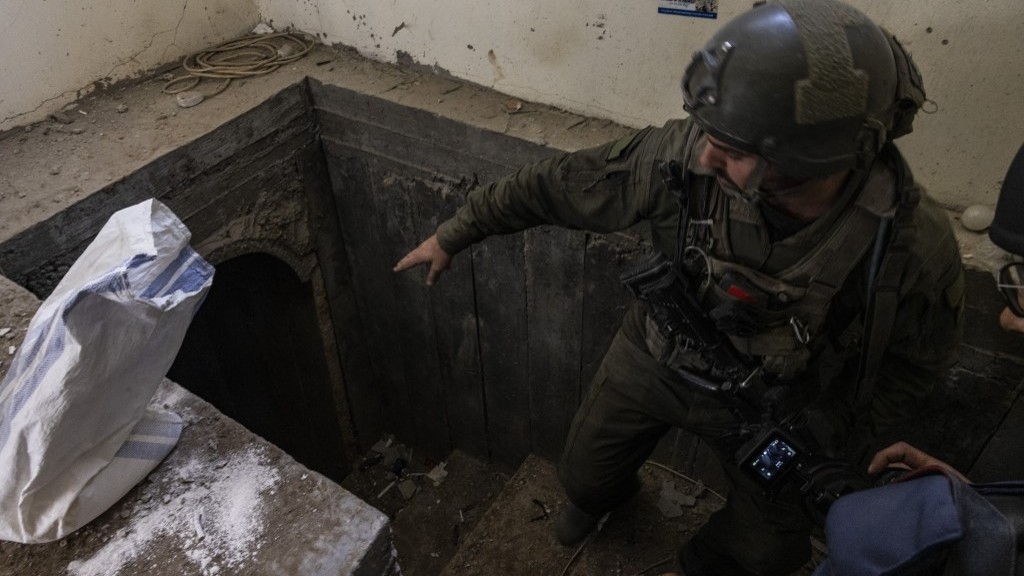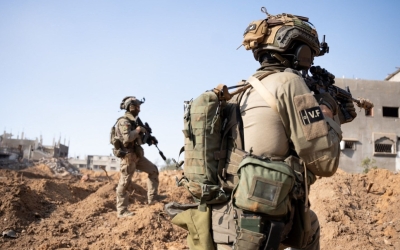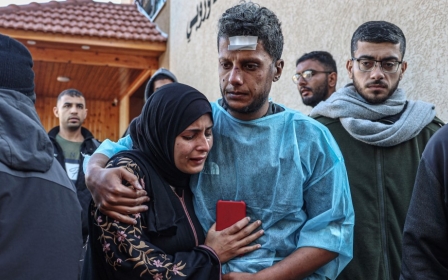War on Gaza: Israeli army knows bombing tunnels can spread toxic gases, report says

The Israeli army was aware that bombing tunnels in Gaza could cause the dispersal of toxic gases, such as carbon monoxide, two defence sources told an Israeli news outlet on Tuesday.
According to Sikha Mekomit, one of the sources said that during Israel’s bombing of Gaza, Hamas members were killed “not just because of bombing, but because of the gases emitted”.
He explained that when certain warheads were used in a closed space, they can spread a byproduct gas that can have an effect across a great distance, especially when in a confined space.
The second source said that internal tests have been conducted and have shown that gases from bombs can have fatal results.
The report said that bombs dropped into tunnels in Gaza were used out as part of Israel’s “lightning strike” operation.
The chief of staff of the operation, Gadi Eisenkot, has noted that the purpose of it was to “turn the tunnels into a death trap, and kill hundreds of Hamas members who would be trapped in them”.
However, an Israeli army spokesperson said that the “army uses legal means of warfare only, in accordance with international law. The Israeli army has not in the past, and does not currently, use by-products of bombs for the purpose of killing its targets.”
Inhaling toxic gases from Israeli bombs
Debate over Israel’s use of harmful gases first arose after Maayan Sherman, the mother of a captive who died in Gaza, accused the Israeli army of poisoning her son earlier this month.
“We were told that there is a reasonable possibility that he inhaled toxic gases from the IDF bombs,” she wrote on Facebook.
The Israeli army responded by saying that it was unable to confirm the causes of the deaths of Israeli soldiers Ron Sherman and Nik Beizer, and French-Israeli civilian Elia Toledano, whose bodies were repatriated from Gaza in December last year.
Follow Middle East Eye's live coverage of the Israel-Palestine war
The army said it found the bodies of the captives in a Hamas tunnel in Jabaliya, near the site where Ahmed Jarandor, commander of Hamas’ northern brigade, was killed in a targeted attack a month earlier.
It claimed that it was not aware of the hostages’ location when it struck the tunnel Jarandor was in.
Sherman, however, disputed this claim, saying army Major General Ghassan Alian told her they were aware of her son’s location at any given moment.
She called the army’s latest statement “another lie in the mask of lies”.
Sherman also questioned whether Israel was trying to whitewash the operation, as she believes they may have sacrificed the three hostages in order to kill Jarandor.
She said the Israeli army pumped poisonous gas into the tunnel area where her son was being held.
On Facebook, she claimed that her son was “indeed murdered – not by Hamas. Think more like Auschwitz and the showers, but without Nazis."
The Israeli army previously admitted to killing captives in its war on Gaza, causing uproar within Israeli society.
In December, Israeli soldiers shot and killed three Israeli men as they exited a building in the Shujaiya neighbourhood, east of Gaza City, shirtless and holding white flags, a probe by the military found.
Around 240 people were taken captive during the surprise Hamas-led attack on southern Israel on 7 October.
Some 132 captives remain in Gaza, after scores were released in a deal with Hamas in November. Hamas says more than 20 captives have been killed by Israeli bombings but Israel has not confirmed these deaths.
Israel's ferocious bombing campaign and ground offensive in Gaza has killed more 26,700 since October, according to the Palestinian health ministry.
Middle East Eye propose une couverture et une analyse indépendantes et incomparables du Moyen-Orient, de l’Afrique du Nord et d’autres régions du monde. Pour en savoir plus sur la reprise de ce contenu et les frais qui s’appliquent, veuillez remplir ce formulaire [en anglais]. Pour en savoir plus sur MEE, cliquez ici [en anglais].




